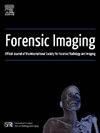用死后肺计算机断层扫描深度学习辅助诊断溺水
IF 1
Q4 RADIOLOGY, NUCLEAR MEDICINE & MEDICAL IMAGING
引用次数: 0
摘要
使用死后CT图像确定死因至关重要,因为它为法医调查提供了一种非侵入性、客观的方法,同时与传统尸检方法相比,在时间效率和成本效益方面具有显著优势。然而,由于死后CT图像中肺部状况的不同,尚未建立一种标准化的方法来诊断溺水。本研究旨在设计一个深度学习辅助框架,用于从死后肺部CT图像中诊断溺水。首先,为了找到合适的卷积神经网络(CNN)架构,将肺部CT图像分类为溺水和非溺水病例,使用单个机构的尸体CT图像数据集训练三个著名的CNN, AlexNet, VGG16和MobileNet,并使用从公开的死者CT图像数据库中提取的图像来评估其性能和泛化性。结果表明,VGG16架构在溺水图像分类上的平均AUC-ROC最高,准确率分别为88.42%和80.56%,在公共图像数据集上的泛化性最高,AUC-ROC为71.79%。此外,基于病例的诊断是使用从模型到同一受试者的每个切片给出的概率分数进行的。原始数据集的最终诊断准确率为96%,公共数据集的最终诊断准确率为79%,表明所设计的框架可以用作使用死后CT图像识别溺水病例的筛查工具的巨大潜力。本文章由计算机程序翻译,如有差异,请以英文原文为准。

A deep-learning-aided diagnosis of drowning using post-mortem lung computed tomography
Identifying the cause of death using postmortem CT images is crucial since it provides a non-invasive, objective approach for forensic investigations while offering significant advantages in terms of time efficiency and cost-effectiveness compared to traditional autopsy methods. However, due to varied lung conditions in the postmortem CT images, a standardized method to diagnose drowning using CT images has not been established. This study aimed to devise a deep-learning-aided framework for diagnosing drowning from postmortem lung CT images. First, to find the suitable convolutional neural network (CNN) architecture for classifying lung CT images into drowning and non-drowning cases, three well-known CNNs, AlexNet, VGG16, and MobileNet, were trained with a single-institute postmortem CT image dataset and the performance and generalizability were also evaluated using images extracted from a public decedent CT image database. The results showed that VGG16 architecture outperformed the three models with the highest mean AUC-ROC and accuracy values of 88.42 % and 80.56 % respectively for drowning image classification, as well as the highest generalizability with an AUC-ROC of 71.79 % on a public image dataset. Additionally, the case-based diagnosis was performed using probability scores given from the model to each slice taken in the same subject. The final diagnosis accuracy was 96 % on the original dataset and 79 % on the public dataset, showing the strong potential that the devised framework can be used as a screening tool to identify drowning cases using postmortem CT images.
求助全文
通过发布文献求助,成功后即可免费获取论文全文。
去求助
来源期刊

Forensic Imaging
RADIOLOGY, NUCLEAR MEDICINE & MEDICAL IMAGING-
CiteScore
2.20
自引率
27.30%
发文量
39
 求助内容:
求助内容: 应助结果提醒方式:
应助结果提醒方式:


